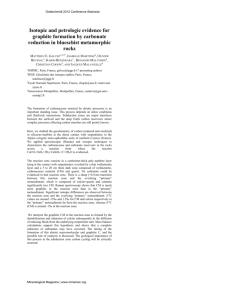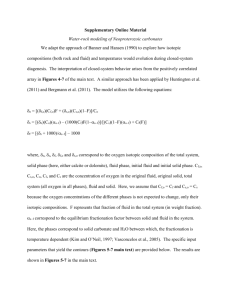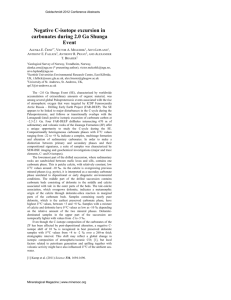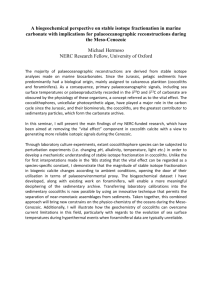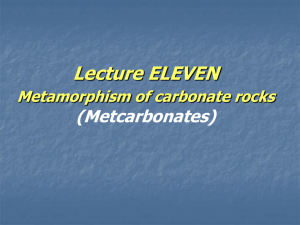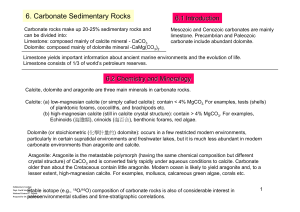stable-isotope and chemical-compositions of carbonate ocelli and
advertisement
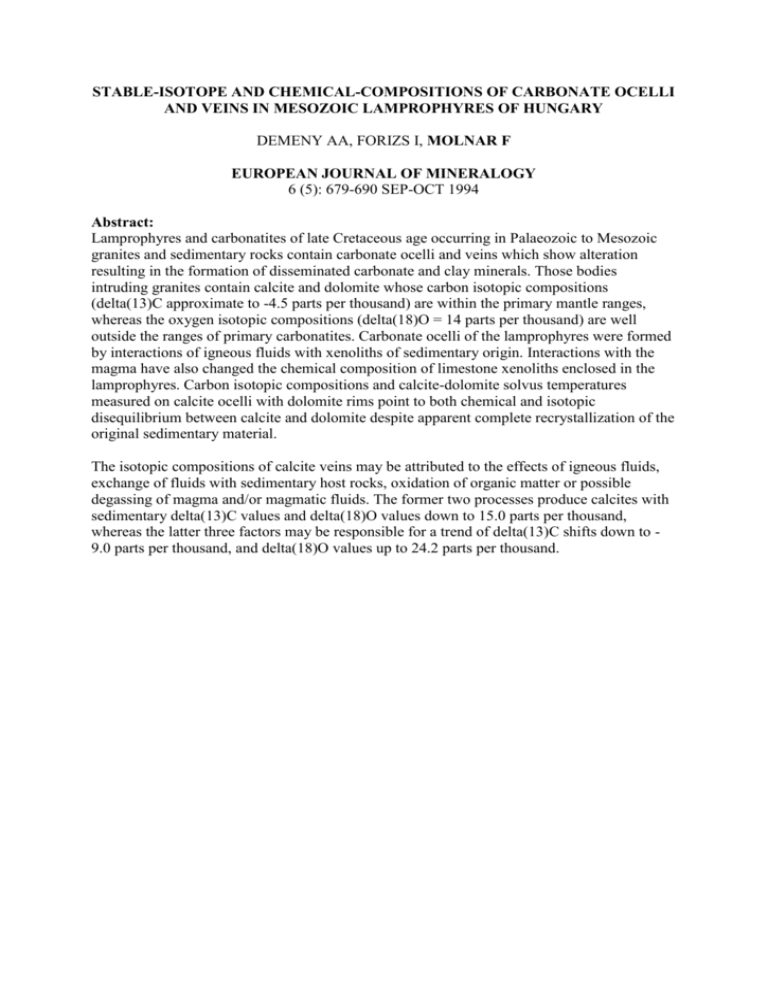
STABLE-ISOTOPE AND CHEMICAL-COMPOSITIONS OF CARBONATE OCELLI AND VEINS IN MESOZOIC LAMPROPHYRES OF HUNGARY DEMENY AA, FORIZS I, MOLNAR F EUROPEAN JOURNAL OF MINERALOGY 6 (5): 679-690 SEP-OCT 1994 Abstract: Lamprophyres and carbonatites of late Cretaceous age occurring in Palaeozoic to Mesozoic granites and sedimentary rocks contain carbonate ocelli and veins which show alteration resulting in the formation of disseminated carbonate and clay minerals. Those bodies intruding granites contain calcite and dolomite whose carbon isotopic compositions (delta(13)C approximate to -4.5 parts per thousand) are within the primary mantle ranges, whereas the oxygen isotopic compositions (delta(18)O = 14 parts per thousand) are well outside the ranges of primary carbonatites. Carbonate ocelli of the lamprophyres were formed by interactions of igneous fluids with xenoliths of sedimentary origin. Interactions with the magma have also changed the chemical composition of limestone xenoliths enclosed in the lamprophyres. Carbon isotopic compositions and calcite-dolomite solvus temperatures measured on calcite ocelli with dolomite rims point to both chemical and isotopic disequilibrium between calcite and dolomite despite apparent complete recrystallization of the original sedimentary material. The isotopic compositions of calcite veins may be attributed to the effects of igneous fluids, exchange of fluids with sedimentary host rocks, oxidation of organic matter or possible degassing of magma and/or magmatic fluids. The former two processes produce calcites with sedimentary delta(13)C values and delta(18)O values down to 15.0 parts per thousand, whereas the latter three factors may be responsible for a trend of delta(13)C shifts down to 9.0 parts per thousand, and delta(18)O values up to 24.2 parts per thousand.
